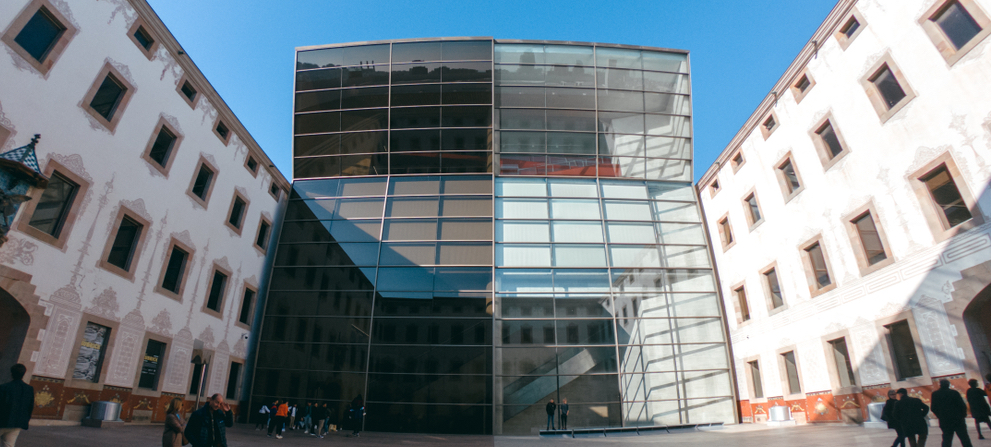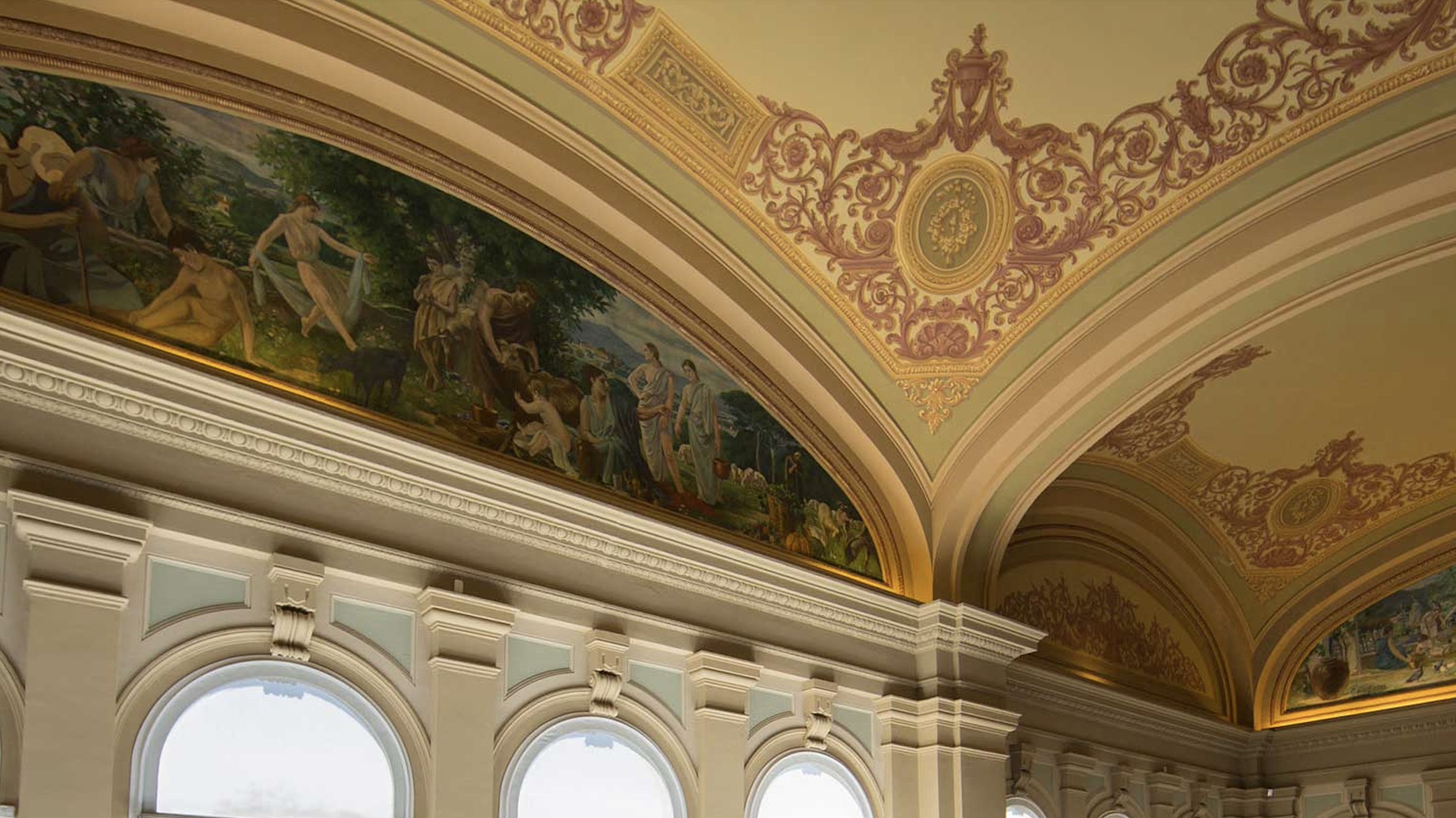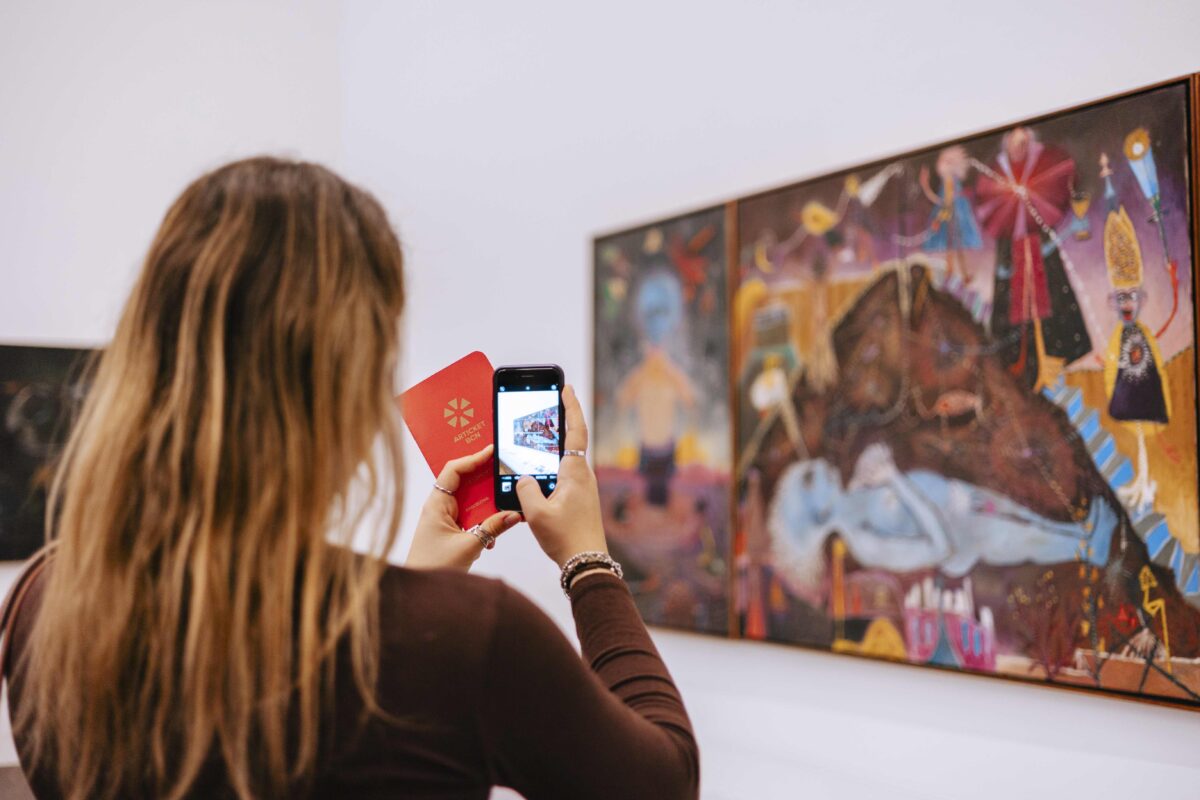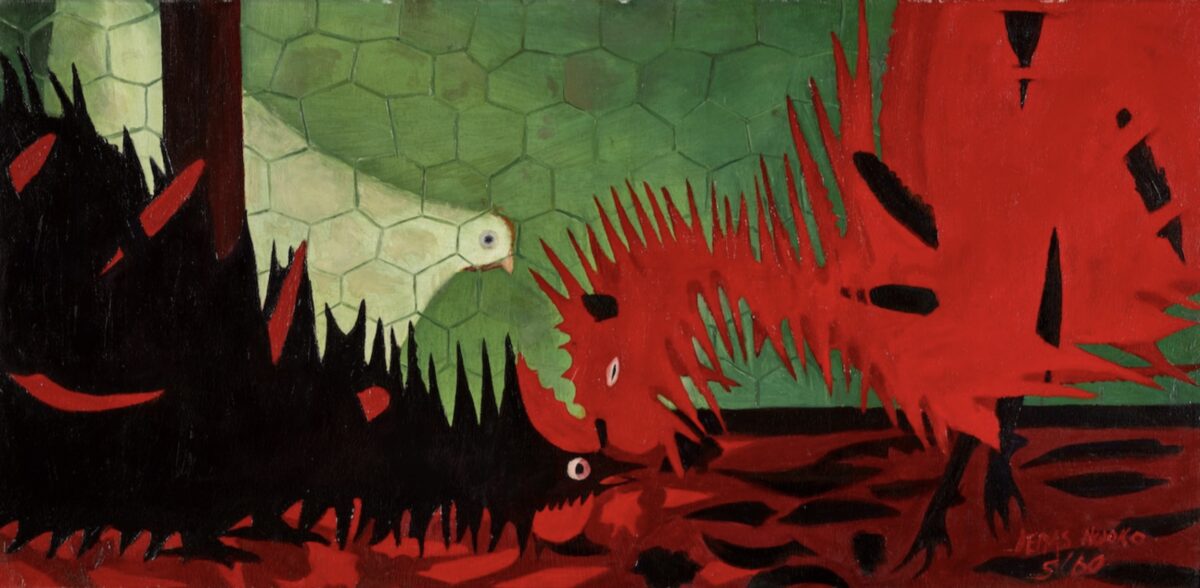Beyond the works of art they contain, the Articket museums are fascinating spaces in their own right, with unique spots and hidden secrets that surprise even those who know the city inside out. Today we bring you our favourites, so that you can become intrepid explorers while enjoying the best art in Barcelona!
Looking without being seen: a surviving lattice in the Museu Picasso

Before entering the Museu Picasso, stop for a moment and observe in detail its imposing facades on Carrer de Montcada. One of them, belonging to the old Casa Mauri, has a feature which is unique in Barcelona and which has miraculously survived the transformations of the building.
It is an 18th-century wooden latticework, or xafardera, an architectural element that provides privacy, filters sunlight and allows air to pass through. Taking into account the narrowness of Carrer de Montcada, much frequented centuries ago by the crème de la crème of society, it gave privacy to the window and allowed people to observe from the inside, and perhaps have a gossip – a xafarderia in Catalan – without being seen. A win-win situation!
The museum recently restored it, which you can find out more about here. What’s more, in addition to keeping an exceptional collection, the Museu Picasso also prioritises the conservation of its architectural complex to add value and contribute to a greater knowledge of our heritage.
A facade or mirror? A hidden perspective of Barcelona at the CCCB

To enter the CCCB you have to go through the Pati de les Dones, a large central area that distributes the various spaces of the centre. You will see how the original elements of the 19th century, from when the architectural complex belonged to the Casa de la Caritat, interact with the modern, 30-metre-high glass facade, which closes the courtyard on the north side.
Now notice how its highest part leans over the courtyard with an overhang. Do you see how the city is reflected in it? With its play of reflections, the facade is transformed into a mirror of the landscape and a privileged vantage point of contemporary Barcelona.
The Tres Xemeneies del Poble-Sec, the Hotel Vela, the Edifici Colón, the Torre Glòries or the sea itself are some of the landmarks you will observe, interestingly enough, from the street. A very photogenic and unique perspective, where you’ll be able to take the most Instagramable shots!
An open-air museum (which is also free!) next to the Fundació Joan Miró

When you visit the Fundació Joan Miró, take the opportunity to have a stroll through its privileged environment in the middle of nature. Among its spaces you will find the Jardí de les Escultures nearby, one of the youngest and most interesting parks in Montjuïc. It’s the perfect place to stop for a while and enjoy the contemporary art hidden there.
Created in 1990, the Fundació and Barcelona City Council agreed that the sculpture of Manelic, the protagonist of Terra Baixa by Àngel Guimerà that had been there since the Universal Exhibition of 1929, should have company. Bringing vitality back to a space that had fallen into disrepair, they asked artists who had already exhibited at the Fundació Joan Miró to create a work specially made for the garden.
It’s an ingenious way of playing with the duplicity between nature and culture, and a vindication of the quality of local artists, giving them a space of permanent visibility. Perejaume, Tom Carr, Sergi Aguilar, Pep Duran and Jaume Plensa are some of the great names that you can enjoy for free. An open-air museum which is a must for art lovers, from which you will see a different perspective of the rationalist building of the Fundació Joan Miró!
Oteiza, Haring and Chillida outside the MACBA
Once you arrive at Plaça dels Àngels to visit MACBA you’ll undoubtedly be taken aback by Richard Meier’s magnificent building. Make sure you pause for a few seconds and take in your surroundings: three works from the MACBA Collection will welcome you, which connect the museum to the heartbeat of the Raval neighbourhood and bring art closer to everyone.
- Just in front of the main facade, on the right hand side, you will find Jorge Oteiza’s The Wave among the buzz of skateboarders who practise there. Notice how it integrates into the space, contrasting with the intense white of the museum and highlighting the sinuousness of the work!
- On the left hand side, on the middle wall at the back of the square, you will see the Barcelona, Mural G-333 ceramic mural. The sculptor Eduardo Chillida, aware that this run-down area of the Raval deserved his attention, intervened with his particular style to make this public area a space where everyone can access art.
- Now look to the right, a couple forming a pair of scissors is trying to cut off the head of a snake which is wrapped around a syringe. The text of the mural says it very clearly: it represents AIDS, a disease that would eventually take the life of its creator, the renowned artist and activist Keith Haring. What you see is a copy of the original that Haring painted in the middle of the Raval in 1989.
Here’s a little secret: if you go up to MACBA’s Meier Terrace, you can enjoy a privileged perspective of the three works while taking in the picturesque atmosphere of Plaça dels Àngels.
A facade that speaks to the Fundació Antoni Tàpies

The Cloud and Chair sculpture that crowns the Fundació Antoni Tàpies is visible to everyone that passes by, but what they might not know is that the facade also hides the busts of Dante, Cervantes and Milton. This is because, before becoming a museum, the building belonged to the publishing house Montaner i Simón, which, among others, published these three great writers.
In fact, the decoration of the facade is a clear declaration of intent. The name of the publishing house is written on the main door and a little higher up there are three medallions with the names of three scholars who used printing methods to publish their studies: Malte-Brun, Secchi and Lafuente. What’s more, although the facade has an imposing appearance, inside it hides a factory where all the book production processes were carried out.
The publishing house was one of the most important of its time, with more than 120 years of history, and the owners assigned its construction to the young Lluís Domènech i Montaner, architect of, among others, Palau de la Música and Casa Lleó i Morera located in the famous “Mansana de la Discòrdia” or “Block of Discord” on Passeig de Gràcia. When you enter the Fundació, make sure you visit the library, the publishing house’s old book warehouse, where wood and art publications coexist in perfect harmony.
From the old Tea Room to the library of the Museu Nacional
And speaking of libraries… When you visit the Museu Nacional with your Articket passport, don’t forget to go up to the first floor. In the old Tea Room of the Palau Nacional you will find one of the most peaceful and meaningful spaces in the Museum: the Library Joaquim Folch i Torres, founded to support the research of the Museum’s professionals and offer a public service with free access (you just need to show your ID or passport).
With more than a hundred years of history, its origin dates back to 1891, with the creation of the Graphic Library of the Museum of Artistic Reproductions, located in the now-defunct Palau de la Indústria in the Parc de la Ciutadella. Since then, and after several changes of location, the collection has been enriched with more than 150,000 volumes, art monographs and catalogues, historical documents, art and humanities magazines and a reserve section with manuscripts, incunabula, works published up to 1850 and bibliophile editions. A fascinating documentary heritage!
The decoration of the space is charming, as can be expected from an elegant old tea room. It is the work of the painter Joan Colom and it mainly features scenes of characters of classical beauty integrated into a Mediterranean landscape. Frescoes with flowers and garlands, baskets of fruit and flowers and an imposing dome will welcome you to this oasis of calm and knowledge which is unique to Barcelona.




